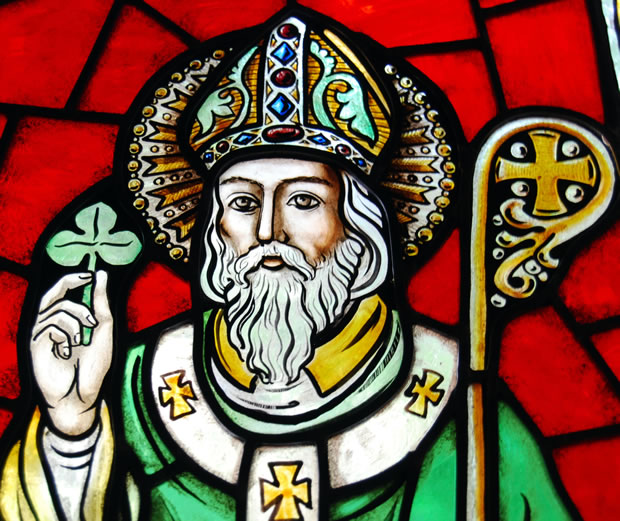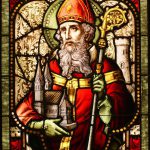On St. Patrick’s day – March 17 – Irish people everywhere in the world meet and party with beer and music. This often takes place in Irish pubs, which are to be found in every corner of the world. In many places there will be parades, where the participants are dressed in green and orange – the national colours of Ireland.
But who was the bloke, the source of all this merrymaking?

Patrick of Ireland was born about 386 AD and presumably died 17 March 493 AD. He is responsible for christening the Irish but was born into a Christian British family. He was kidnapped at 16, and shipped to Northern Ireland to work as a shepherd. Six years later, he dreamt that he soon would return home. Shortly after he managed to escape and travel by ship to the continent, and after travelling in Gaul and other northern Roman provinces, he returned home to his family.
Safely back in the bosom of his family, Patrick dreamed that he was called to Ireland as a missionary. It is presumed, that he travelled to Gaul and was a monk at Lérins from 412 to 415 and afterwards in Tours. He was ordained as a priest by Germanus of Auxerre and seemed to function for 15 years in Auxerre before completing his education in Britain. He received no higher education, and his Latin writings reveals this.
According to legend, Patrick returned to Ireland in 432, where he was appointed Bishop of St. Germanus. With him came an auxiliary bishop, a priest, a lawyer and various artisans. There were already some Christians in Ireland, and Pope Celestin I had in 431 sent Palladius to Ireland as their first bishop. Palladius travelled some years after to Scotland, where he felt it was easier to convert people. It was Patrick who spread Christianity in a larger part of Ireland. He worked primarily in the Northern, Central and Western regions, where he organised the church.
Patrick is said to have challenged the great chieftain Laoghaire in Tara on Easter evening. He lit Easter lights on the hill top Slane, brought the druids to silence and converted the king’s daughters. In Leitrim. he tore down the idol of Crom Cruach – a pre-Christian, Irish god – down. He was not afraid to face his ideological and religious opponents, and many of them were converted. On a note on this, Ireland has a remarkably special status in Western Europe: no missionaries were martyred there and the christening of Ireland was a peaceful transition.
Saint Patrick was never canonised by the Catholic Church, and owe his saint’s name is due to the common people – to the Irish!
Visit www.stpatricksfestival.ie to find out, what’s brewing in the different parts of Ireland on this National Holiday.
Learn more









